Global Market Comments
September 10, 2019
Fiat Lux
SPECIAL ARTIFICIAL INTELLIGENCE ISSUE
Featured Trade:
(NEW PLAYS IN ARTIFICIAL INTELLIGENCE),
(NVDA), (AMD), (ADI), (AMAT), (AVGO), (CRUS),
(CY), (INTC), (LRCX), (MU), (TSM)
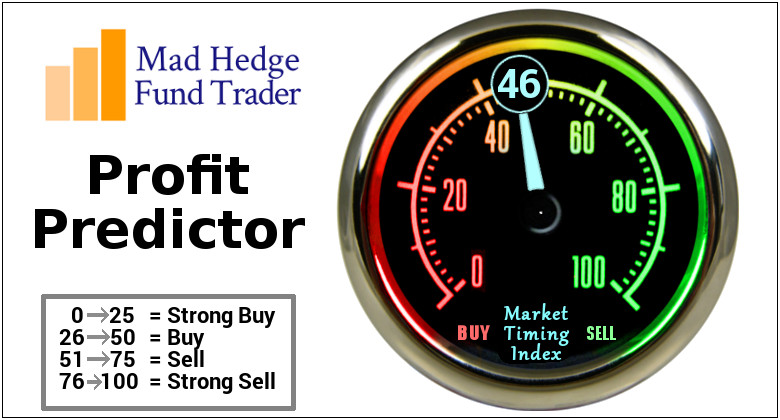
Global Market Comments
September 10, 2019
Fiat Lux
SPECIAL ARTIFICIAL INTELLIGENCE ISSUE
Featured Trade:
(NEW PLAYS IN ARTIFICIAL INTELLIGENCE),
(NVDA), (AMD), (ADI), (AMAT), (AVGO), (CRUS),
(CY), (INTC), (LRCX), (MU), (TSM)

It’s been three years since I published my first Special Report on artificial intelligence and urged readers to buy the processor maker NVIDIA (NVDA) at $68.80.
The stock quadrupled, readers are understandably asking me for my next act in the sector.
The good news is that I have one.
For a start, you could go out and buy NVIDIA again.
With an explosive 50% annual earnings growth, a near-monopoly in super fast processors, and a huge lead over the competition, I think there is another double in the shares that could take the price up to a stratospheric $300. Its newest super-fast graphics card, the Turing, promises to be a real barn burner and dominate the industry yet again.
But I can do better than that.
The good news if you are new to this sector is that the entire AI space has started to broaden out to offer a host of investment opportunities beyond the tiny handful I first mentioned in 2016.
These include legacy chipmakers, survivors of the great Dotcom bust, whose shares have barely moved in years.
Yes, there is such a thing as a cheap AI stock. To find out who they are, read on.
The reason for the expansion of the AI sector is that practically overnight these ultra-sophisticated algorithms have become essential to any company that wants to survive in online commerce or stay in business….period.
Those of us who have been in this business for more than 15 minutes have seen this pattern before, and the resulting impact on share prices: the Boeing 707, the personal computer, Windows, the Internet, and the smart cell phone.
AI is everywhere.
In the old days, visiting a website and window-shopping their products was easy. You just clicked around a few times and then moved on to the next site.
Now if you click on a product once, that site will follow you around relentlessly for months, appearing in the margins of your emails, offering you endless discounts and special deals.
I bought a Dell computer six months ago, and it is still pounding away at me with better offers. I feel like such a dummy buying a machine at the first price asked.
That is all AI.
The auto industry is now a major growth industry for AI. Even a simple garden-variety vehicle needs 100 chips just to operate.
The gull-wing doors on my new Tesla Model X each has its own learning program. They never open the same way twice.
In fact, when I first picked up the car last year, the salesman warned by saying it would be “stupid” for the first 3,000 miles.
It had to “learn” how to drive before I let it attempt any sophisticated self-driving maneuvers, like backing into a parking space on a crowded street.
I let it park itself in my garage now. I have only had a heart attack once.
With US annual auto production at 16.7 million units annualized, and global car and commercial vehicle production at a record 94.64 million, that is a lot of processors.
I have been covering Silicon Valley since it was a verdant, sun-kissed peach orchard in Northern California.
I have to say that in the half-century that I have followed the technology industry, I have never seen the principals, gurus, and visionaries so excited about a major new trend like AI.
Asking if AI is relevant now is like pondering the future of Thomas Edison’s new electricity invention in 1890.
If you think that AI still belongs in the realm of science fiction, you obviously didn’t get the memo. It is all around us all the time, 24/7. You just don’t know it yet.
And here’s the rub.
It is impossible to invest purely in AI.
All-new AI startups comprise small teams of experts from private labs and universities financed by big venture capital firms like Sequoia Capital, Kleiner Perkins, and Andreeson Horowitz.
After developing software for a year or two, they are sold on to major technology firms at huge premiums. They never see the light of day in the form of a public listing.
Alphabet (GOOGL) acquired Britain-based Deep Mind in 2014. Later that year, Google’s AlphaGo program defeated the world’s top-ranked Go player.
In 2016, Microsoft (MSFT) purchased Equivio, a small firm that applies AI to advanced document searches on the Internet.
Amazon (AMZN) recently bought out Orbeus, a startup known for machine learning tools for image recognition.
Amazon’s Jeff Bezos now says that his Amazon Fresh home food delivery service is using AI to grade strawberries.
Really!
We’re not talking small potatoes here.
The global artificial intelligence market is expected to grow at an annual rate of 44.3% a year to $23.5 billion by 2025.
Nearly half of all applications now use some form of AI that by 2020 will earn businesses an extra $60 billion a year in profits.
And from what I have learned from speaking to the major players over the last few weeks, I am convinced that these are low numbers by an order of magnitude.
I have been following developments in artificial intelligence since the 1960s.
There were those feeble computer dating attempts in the early seventies where we all had to prepare IBM punch cards.
I was matched with an annoyingly aggressive bleach blonde real estate agent. (Really?). Her only real qualification was that she was female.
It took decades and tens of thousands of programming man-hours before IBM’s Deep Blue could become a chess grandmaster in 1996, defeating Gary Kasparov.
Big Blue’s latest effort came to us with Watson in 2007, an 85,000-watt behemoth with 90 servers and 15 terabytes of data, or three quarters of the content of the entire Library of Congress.
The machine can read a staggering 1 million books a second. IBM has so far poured $15 billion into the project.
In 2011, Watson defeated the top-rated Jeopardy game show contestant by answering the question “What city’s national museum lost the “Lion of Nimrod.” The answer was “What is Baghdad” (I knew that!).
Today, Watson is on loan to the University of North Carolina at Chapel Hill where it has been deployed to cure cancer.
It took scientists a week to teach Watson how to read medical literature. In the second week, it read every paper published on cancer, some 25 million.
By the third week, it was proposing customized cures for advanced cancer patients, which achieved a 33% success rate.
After all, it can read all of the 8,000 cancer papers that are published every day from around the world IN SECONDS!
Scientists say that Watson has so far reached only 1% of its true potential.
It gets better than that.
A clinic can now biopsy your tumor, sequence its DNA, design a custom protein that will target and destroy your personal tumor, mass-produce it, inject it in your tumor, and cure you of cancer in a month.
This is being done with human volunteers in clinical trials NOW.
Expect this procedure to go retail and be made available to you in about five years. And by that, I mean cheap, locally available, and covered by your health insurance policy.
I believe that Watson and its future offspring will cure the major human maladies within a decade. My generation will probably be the last to suffer serious disease.
It isn’t just Watson that will take us the great leap forward in computing. By 2020, you will be able to buy a low-end laptop for $500 that can hold ALL KNOWLEDGE ACCUMULATED IN HUMAN HISTORY!
They better hurry. That body of knowledge is doubling every 18 months!
It is a key part of my argument that the US will enjoy a Golden Age and see a return of the “Roaring Twenties” during the 2020s.
If you have in any way been involved in the stock market for the past five years, AI has invaded your life.
High frequency trading and hedge funds now account for 70% of the daily trading volume on the major stock exchanges, and almost all of this is AI-driven.
Having spent my entire life trading stocks, I can confirm that in recent years the market’s character has dramatically changed, and not for the better. Call it trading untouched by human hands.
Algorithms are trading against algorithms, and whoever wins the nuclear arms race brings home the big bucks.
You used to need degrees in Finance and Economics, or perhaps an MBA, to become a professional fund manager. Now it’s a Ph.D. in Computer Science.
Remember the May 2010 flash crash when the Dow Average plunged 1,100 points in minutes wiping out $4.1 billion in equity value? AI’s fingerprints were all over that.
In 2016, the British pound lost 6% of its value in a mere two minutes, a move unprecedented in the history of foreign exchange markets. The culprit was AI.
Don’t expect the path forward to AI to be an easy one.
Indeed, the machines already have the power of life and death over all of us.
No less figures than Nobel Prize winner Dr. Stephen Hawking and Tesla’s Elon Musk have warned that computers and the Internet may have the power to pose a threat to human existence within a decade.
They are especially concerned about the militarization of powerful robots, something I know the US Defense Department is hell-bent on developing.
As I write this, the only thing preventing a drone attacking a village in Afghanistan is an Army corporal hitting a red button on a console in Nevada.
In the future, antivirus software won’t be needed to protect your computer. It will be essential to protect you FROM your computer.
You know that massive denial of service attack that hit the United States on October 21, 2016?
I asked one of my friends at security giant Palo Alto Networks (PANW) if it was the Russians again. He replied, “You better hope it’s the Russians.”
The implication is that the Internet may have launched the attack itself.
Now, about that stock recommendation.
Since we aren’t venture capitalists, we can’t buy into pure AI firms in their early stages. And I’m too old to get a Ph.D. in computer science.
We, therefore, have to be sneaky and get in through the back door via an indirect play which still has plenty of upside leverage.
My current favorite among the AI alternative stocks is Advanced Micro Devices (AMD).
If Intel only piques your appetite for AI stocks and you feel you need another serving, I have listed below ten names that will benefit mightily from this once-a-century opportunity.
AI Stock to BUY
Advanced Micro Devices (AMD)
Analogue Devices Communication (ADI)
Applied Materials (AMAT)
Broadcom (AVGO)
Cirrus Logic (CRUS)
Cypress Semiconductor (CY)
Intel (INTC)
Lam Research (LRCX)
Micron Technology (MU)
Taiwan Semiconductor (TSM)
If you’re really lazy, you can just buy a basket of semiconductor stocks through an industry-specific ETF.
The largest is the VanEck Vectors Semiconductor ETF (SMH), with $1.3 billion in assets under management. For a prospectus on the fund, please click here.
Or you could just stick with NVIDIA.
No matter how you want to slice and dice it, AI should be a dominant factor in your IRA, 401k, or benefit plan.
And you are a trader by nature, this will be a great sector to trade around.
As for your computer, you better start leaving it unplugged at night.
You never know.
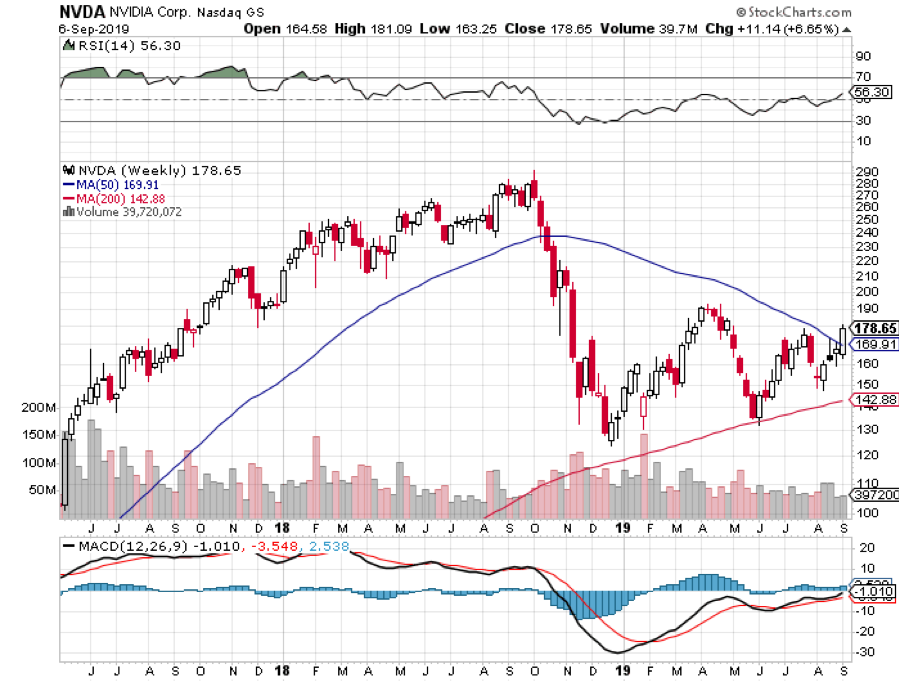
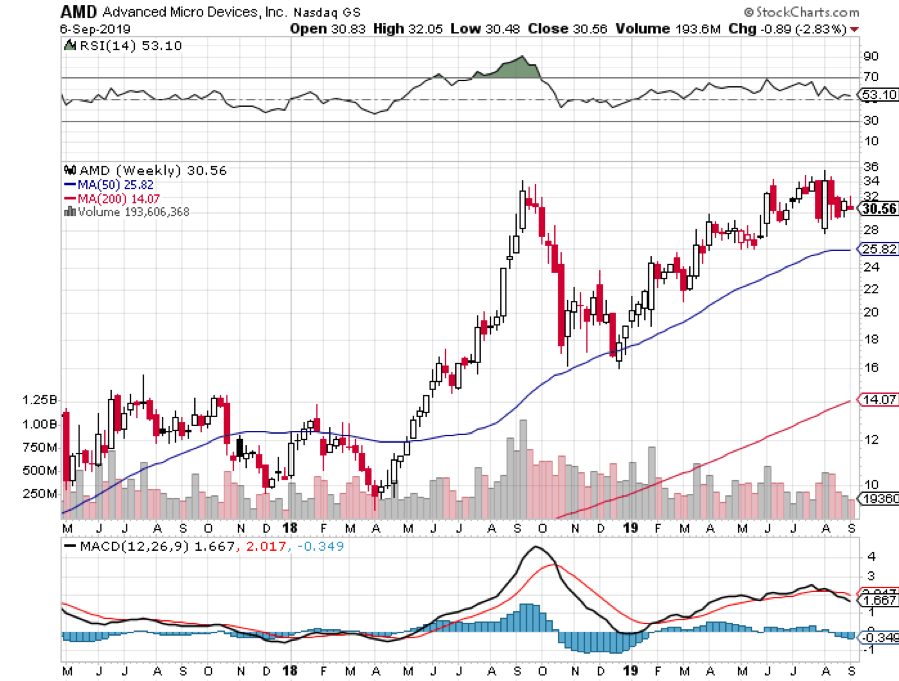
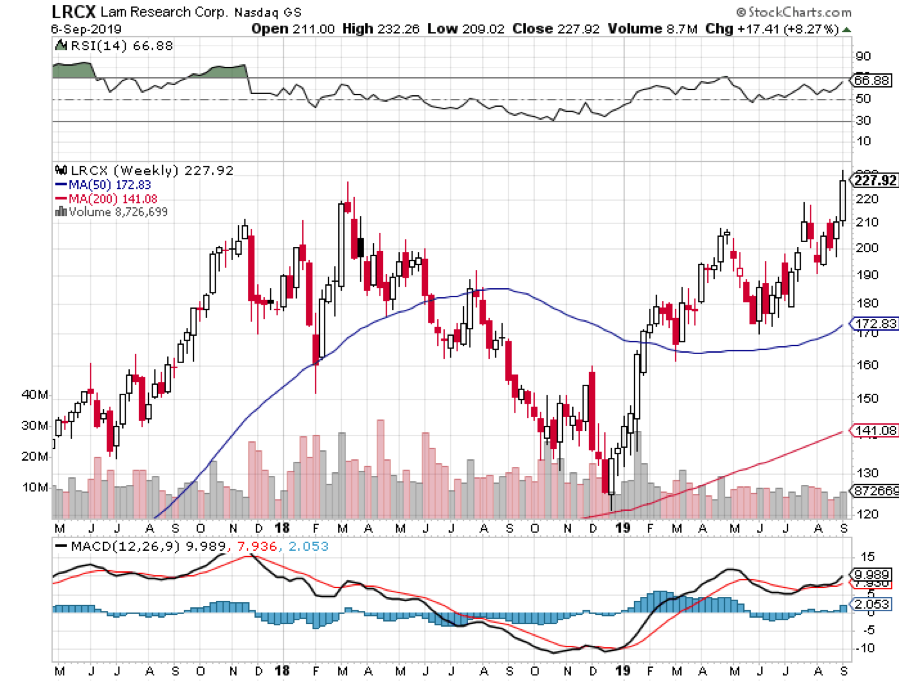
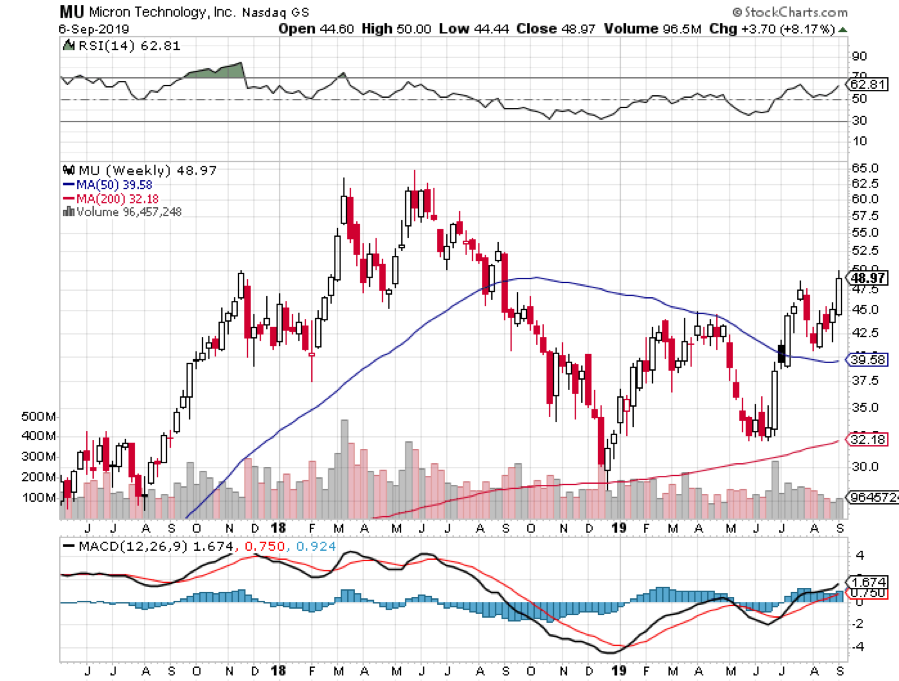
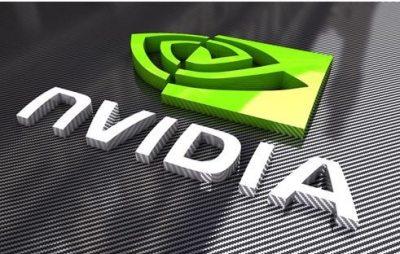
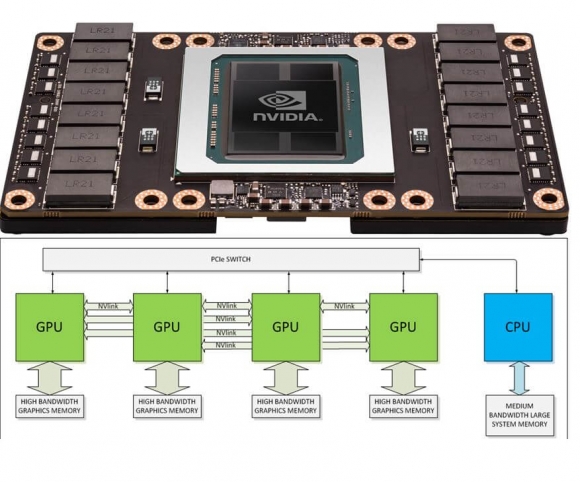

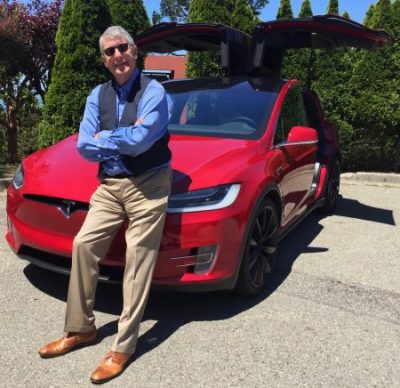
Mad Hedge Technology Letter
July 3, 2019
Fiat Lux
Featured Trade:
(CHIPS ARE BACK FROM THE DEAD)
(XLNX), (HUAWEI), (AAPL), (AMD), (TXN), (QCOM), (ADI), (NVDA), (INTC)

The overwhelming victors of the G20 were the semiconductor companies who have been lumped into the middle of the U.S. and China trade war.
Nothing substantial was agreed at the Osaka event except a small wrinkle allowing American companies to sell certain chips to Huawei on a limited basis for the time being.
As expected, these few words set off an avalanche of risk on sentiment in the broader market along with allowing chip companies to get rid of built-up inventory as the red sea parted.
Tech companies that apply chip stocks to products involved with value added China sales were also rewarded handsomely.
Apple (AAPL) rose almost 4% on this news and many investors believe the market cannot sustain this rally unless Apple isn’t taken along for the ride.
Stepping back and looking at the bigger picture is needed to digest this one-off event.
On one hand, Huawei sales comprise a massive portion of sales, even up to 50% in Nvidia’s case, but on the other hand, it is the heart and soul of China Inc. hellbent on developing One Belt One Road (OBOR) which is its political and economic vehicle to dominate foreign technology using Huawei, infrastructure markets, and foreign sales of its manufactured products.
Ironically enough, Huawei was created because of exactly that – national security.
China anointed it part of the national security apparatus critical to the health and economy of the Chinese communist party and showered it with generous loans starting from the 1980s.
China still needs about 10 years to figure out how to make better chips than the Americans and if this happens, American chip sales will dry up like a puddle in the Saharan desert.
Considering the background of this complicated issue, American chip companies risk being nationalized because they are following the Chinese communist route of applying the national security tag on this vital sector.
Huawei is effectively dumping products on other markets because private companies cannot compete on any price points against entire states.
This was how Huawei scored their first major tech infrastructure contract in Sweden in 2009 even though Sweden has Ericsson in their backyard.
We were all naïve then, to say the least.
Huawei can afford to take the long view with an Amazon-like market share grab strategy because of possessing the largest population in the world, the biggest market, and backed by the state.
Even more tactically critical is this new development crushes the effectiveness of passive investing.
Before the trade war commenced, the low-hanging fruit were the FANGs.
Buying Google, Amazon, Apple, Netflix, and Facebook were great trades until they weren’t.
Things are different now.
Riding on the coattails of an economic recovery from the 2008 housing crisis, this group of companies could do no wrong with our own economy flooded with cheap money from the Fed.
Well, not anymore.
We are entering into a phase where active investors have tremendous opportunities to exploit market inefficiencies.
Get this correct and the world is your oyster.
Get this wrong, like celebrity investors such as John Paulson, who called the 2008 housing crisis, then your hedge fund will convert to a family office and squeeze out the extra profit through safe fixed income bets.
This is another way to say being put out to pasture in the financial world.
My point being, big cap tech isn’t going up in a straight line anymore.
Investors will need to be more tactically cautious shifting between names that are bullish in the period of time they can be bullish while escaping dreadful selloffs that are pertinent in this stage of the late cycle.
In short, as the trade winds blow each way, strategies must pivot on a dime.
Geopolitical events prompted market participants to buy semis on the dips until something materially changes.
This is the trade today but might be gone with one Tweet.
If you want to reduce your beta, then buy the semiconductor chip iShares PHLX Semiconductor ETF (SOXX).
I will double down in saying that no American chip company will ever commit one more incremental cent of capital in mainland China.
That ship has sailed, and the transition will whipsaw markets because of the uncertainty in earnings.
The rerouting of capital expenditure to lesser-known Asian countries will deliver control of business models back to the corporation’s management and that is how free market capitalism likes it.
Furthermore, the lifting of the ban does not include all components, and this could be a maneuver to deliver more face-saving window-dressing for Chairman Xi.
In reality, there is still an effective ban because technically all chip components could be regarded as connected to the national security interests of the U.S.
Bullish traders are chomping at the bit to see how these narrow exemptions on non-sensitive technologies will lead to a greater rapprochement that could include the removal of all new tariffs imposed since last summer.
The risk that more tariffs are levied is also high as well.
I put the odds of removing tariffs at 30% and I wouldn’t be surprised if the administration doubles down on China to claim a foreign policy victory leading up to the 2020 election which could be the catalyst to more tariffs.
It’s difficult to decode if U.S. President Trump’s statements carry any real weight in real time.
The bottom line is the American government now controls the mechanism to when, how, and the volume of chip sales to Huawei and that is a dangerous game for investors to play if you plan on owning chip stocks that sell to Huawei.
Artificial intelligence or 5G applications chips are the most waterlogged and aren’t and will never be on the table for export.
This means that a variety of companies pulled into the dragnet zone are Intel (INTC), Nvidia (NVDA), and Analog Devices (ADI) as companies that will be deemed vital to national security.
These companies all performed admirably in the market following the news, but that could be short lived.
Other major logjams include Broadcom’s future revenue which is in jeopardy because of a heavy reliance on Huawei as a dominant customer for its networking and storage products.
Rounding out the chip sector, other names with short-term bullish price action are Qualcomm (QCOM) up 2.3%, Texas Instruments (TXN) up 2.6%, and Advanced Micro Devices (AMD) up 3.9%.
(AMD) is a stock I told attendees at the Mad Hedge Lake Tahoe conference to buy at $18 and is now above $31.
Xilinix (XLNX) is another integral 5G company in the mix that has their fortunes tied to this Huawei mess.
Investors must take advantage of this short-term détente with a risk on, buy the dip trade in the semi space and be ready to rip the cord on the first scent of blood.
That is the market we have right now.
If you can’t handle this environment when there is blood in the streets, then stay on the sidelines until there is another market sweet spot.
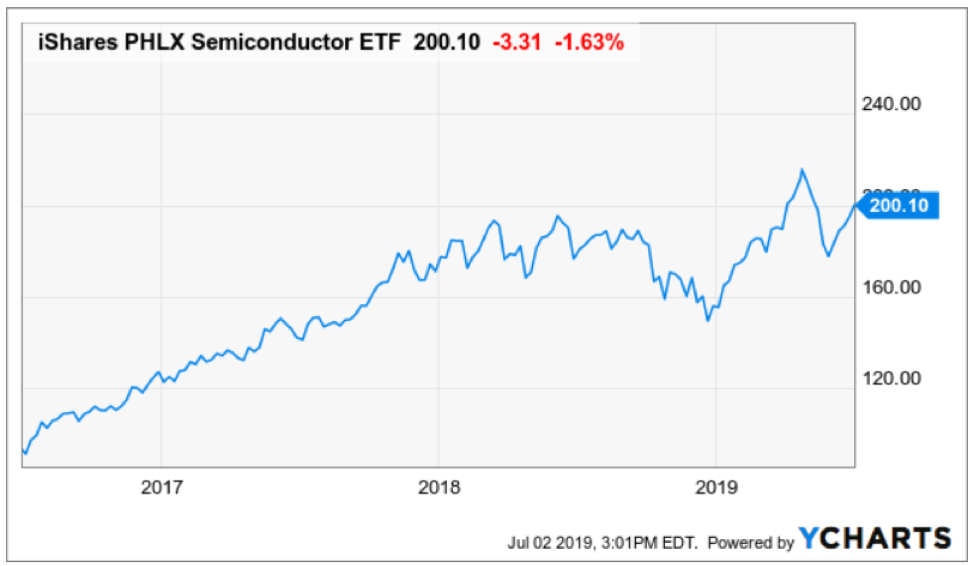
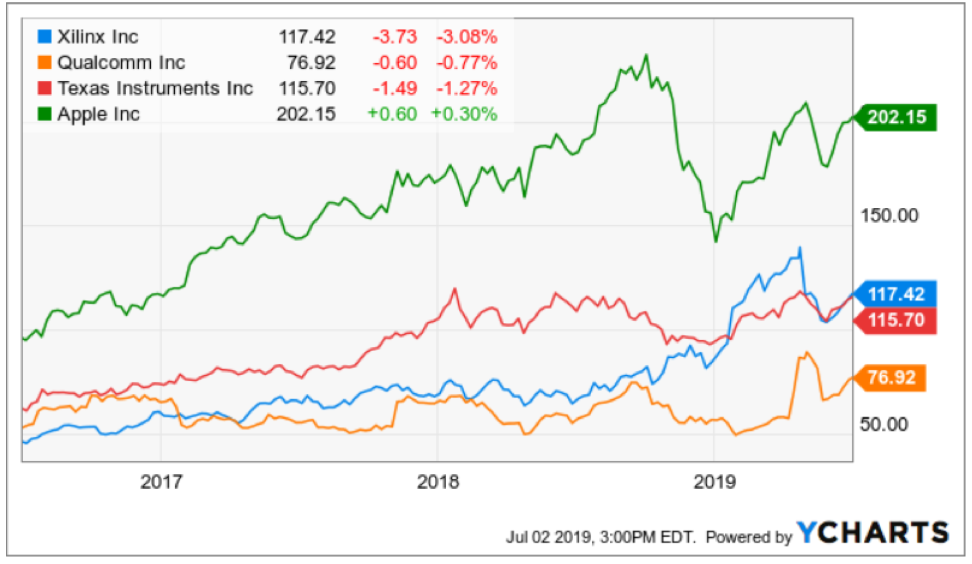
Global Market Comments
August 16, 2018
Fiat Lux
SPECIAL ARTIFICIAL INTELLIGENCE ISSUE
Featured Trade:
(NEW PLAYS IN ARTIFICIAL INTELLIGENCE),
(NVDA), (AMD), (ADI), (AMAT), (AVGO), (CRUS),
(CY), (INTC), (LRCX), (MU), (TSM)
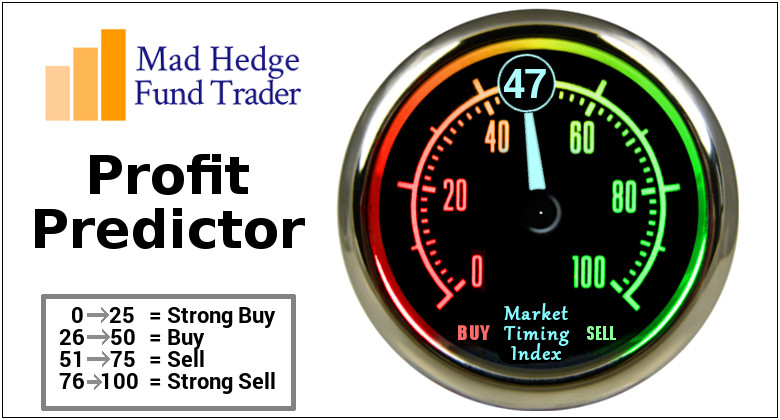
Legal Disclaimer
There is a very high degree of risk involved in trading. Past results are not indicative of future returns. MadHedgeFundTrader.com and all individuals affiliated with this site assume no responsibilities for your trading and investment results. The indicators, strategies, columns, articles and all other features are for educational purposes only and should not be construed as investment advice. Information for futures trading observations are obtained from sources believed to be reliable, but we do not warrant its completeness or accuracy, or warrant any results from the use of the information. Your use of the trading observations is entirely at your own risk and it is your sole responsibility to evaluate the accuracy, completeness and usefulness of the information. You must assess the risk of any trade with your broker and make your own independent decisions regarding any securities mentioned herein. Affiliates of MadHedgeFundTrader.com may have a position or effect transactions in the securities described herein (or options thereon) and/or otherwise employ trading strategies that may be consistent or inconsistent with the provided strategies.
This site uses cookies. By continuing to browse the site, you are agreeing to our use of cookies.
OKLearn moreWe may request cookies to be set on your device. We use cookies to let us know when you visit our websites, how you interact with us, to enrich your user experience, and to customize your relationship with our website.
Click on the different category headings to find out more. You can also change some of your preferences. Note that blocking some types of cookies may impact your experience on our websites and the services we are able to offer.
These cookies are strictly necessary to provide you with services available through our website and to use some of its features.
Because these cookies are strictly necessary to deliver the website, refuseing them will have impact how our site functions. You always can block or delete cookies by changing your browser settings and force blocking all cookies on this website. But this will always prompt you to accept/refuse cookies when revisiting our site.
We fully respect if you want to refuse cookies but to avoid asking you again and again kindly allow us to store a cookie for that. You are free to opt out any time or opt in for other cookies to get a better experience. If you refuse cookies we will remove all set cookies in our domain.
We provide you with a list of stored cookies on your computer in our domain so you can check what we stored. Due to security reasons we are not able to show or modify cookies from other domains. You can check these in your browser security settings.
These cookies collect information that is used either in aggregate form to help us understand how our website is being used or how effective our marketing campaigns are, or to help us customize our website and application for you in order to enhance your experience.
If you do not want that we track your visist to our site you can disable tracking in your browser here:
We also use different external services like Google Webfonts, Google Maps, and external Video providers. Since these providers may collect personal data like your IP address we allow you to block them here. Please be aware that this might heavily reduce the functionality and appearance of our site. Changes will take effect once you reload the page.
Google Webfont Settings:
Google Map Settings:
Vimeo and Youtube video embeds:
